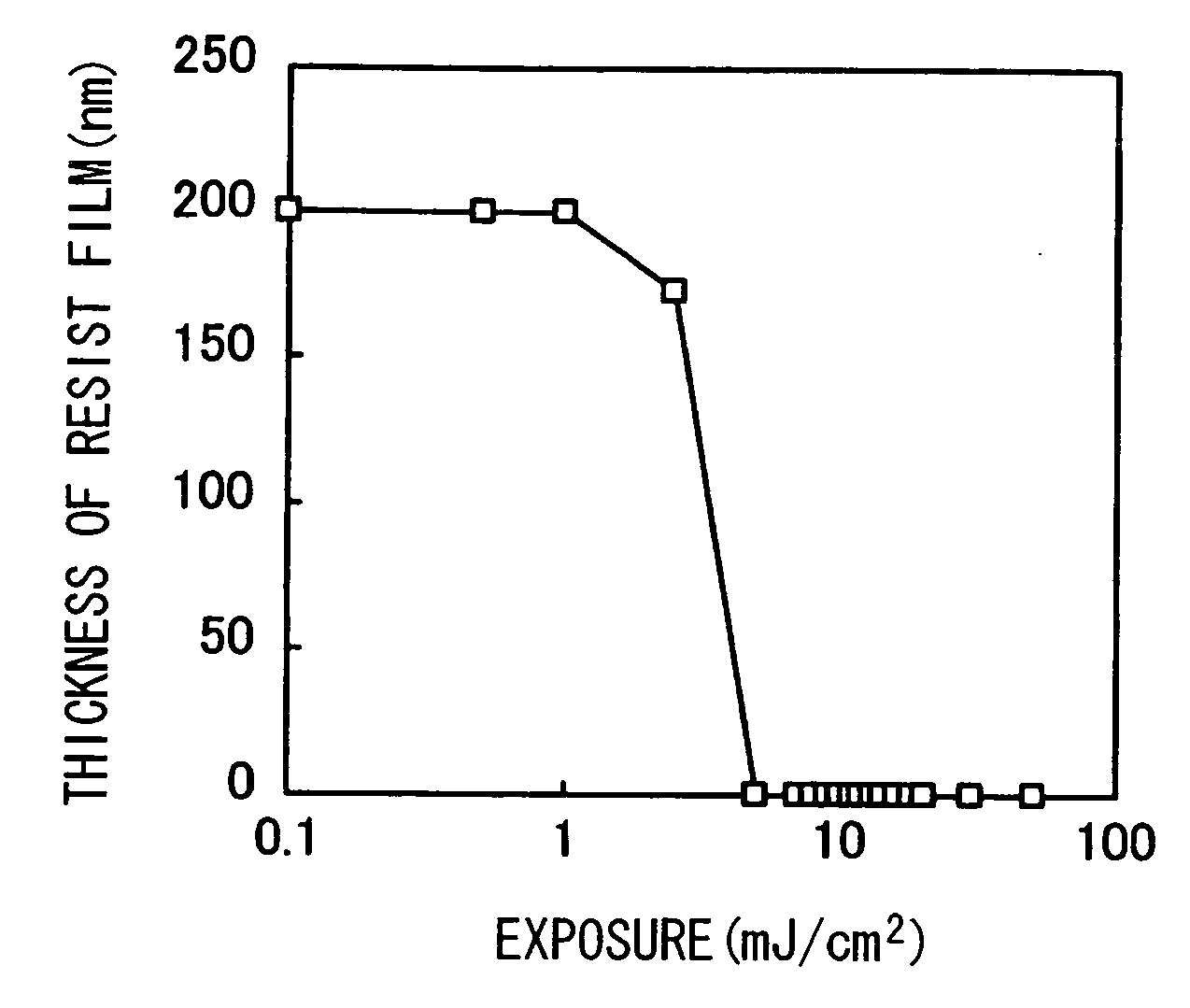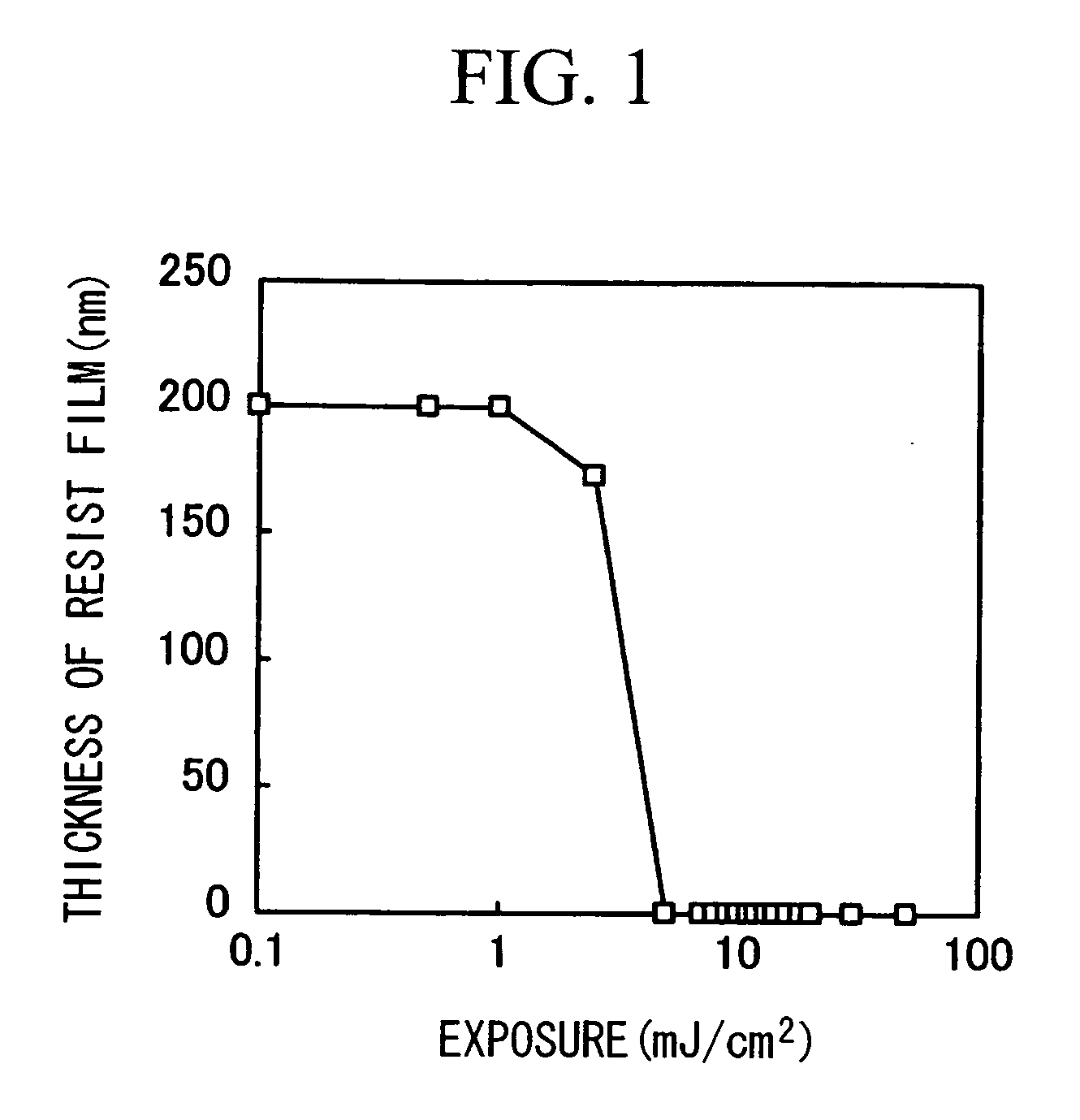Polymer Compound, Photoresist Composition Including the Polymer Compound, and Resist Pattern Formation Method
a technology of polymer compound and composition, applied in the direction of basic electric elements, electrical equipment, nuclear engineering, etc., can solve the problems of not working as a chemically amplified positive, limited acid generator types, and increased risk of defects, and achieves a good resistance pattern shape, high resolution, and fine pattern
- Summary
- Abstract
- Description
- Claims
- Application Information
AI Technical Summary
Benefits of technology
Problems solved by technology
Method used
Image
Examples
synthesis example 1
[0182]Synthesis of 4-oxo-2-adamantyl chloromethyl ether (The compound represented by the following chemical formula (58). Hereinafter, the compounds in Examples may be referred to as a compound name followed by a formula number such as (58).)
[0183]Paraformaldehyde was added to 4-oxo-2-hydroxyadamantane, and a hydrogen chloride gas was injected at 2.5 equivalent amounts per this 4-oxo-2-hydroxyadamantane. Then, the reaction was conducted at a temperature of 50° C. for 12 hours. After the completion of the reaction, the product was distillated under reduced pressure so as to obtain 4-oxo-2-adamantyl chloromethyl ether (compound 1) represented by the following chemical formula (58).
synthesis example 2
Synthesis of 2-adamantyl chloromethyl ether (59)
[0184]Paraformaldehyde was added to 2-hydroxyadamantane, and a hydrogen chloride gas was injected at 2.5 equivalent amounts per this 2-hydroxyadamantane. Then, the reaction was conducted at a temperature of 50° C. for 12 hours. After the completion of the reaction, the product was distillated under reduced pressure so as to obtain 2-adamantyl chloromethyl ether (compound 2) represented by the following chemical formula (59).
synthesis example 3
Synthesis of 1-adamantylmethyl chloromethyl ether (60)
[0185]Paraformaldehyde was added to adamantane-1-methanol, and a hydrogen chloride gas was injected at 2.5 equivalent amounts per this adamantane-1-methanol. Then, the reaction was conducted at a temperature of 50° C. for 12 hours. After the completion of the reaction, the product was distillated under reduced pressure so as to obtain 1-adamantylmethyl chloromethyl ether (compound 3) represented by the following chemical formula (60).
PUM
| Property | Measurement | Unit |
|---|---|---|
| wavelength | aaaaa | aaaaa |
| soluble | aaaaa | aaaaa |
| solubility | aaaaa | aaaaa |
Abstract
Description
Claims
Application Information
 Login to View More
Login to View More - R&D
- Intellectual Property
- Life Sciences
- Materials
- Tech Scout
- Unparalleled Data Quality
- Higher Quality Content
- 60% Fewer Hallucinations
Browse by: Latest US Patents, China's latest patents, Technical Efficacy Thesaurus, Application Domain, Technology Topic, Popular Technical Reports.
© 2025 PatSnap. All rights reserved.Legal|Privacy policy|Modern Slavery Act Transparency Statement|Sitemap|About US| Contact US: help@patsnap.com



